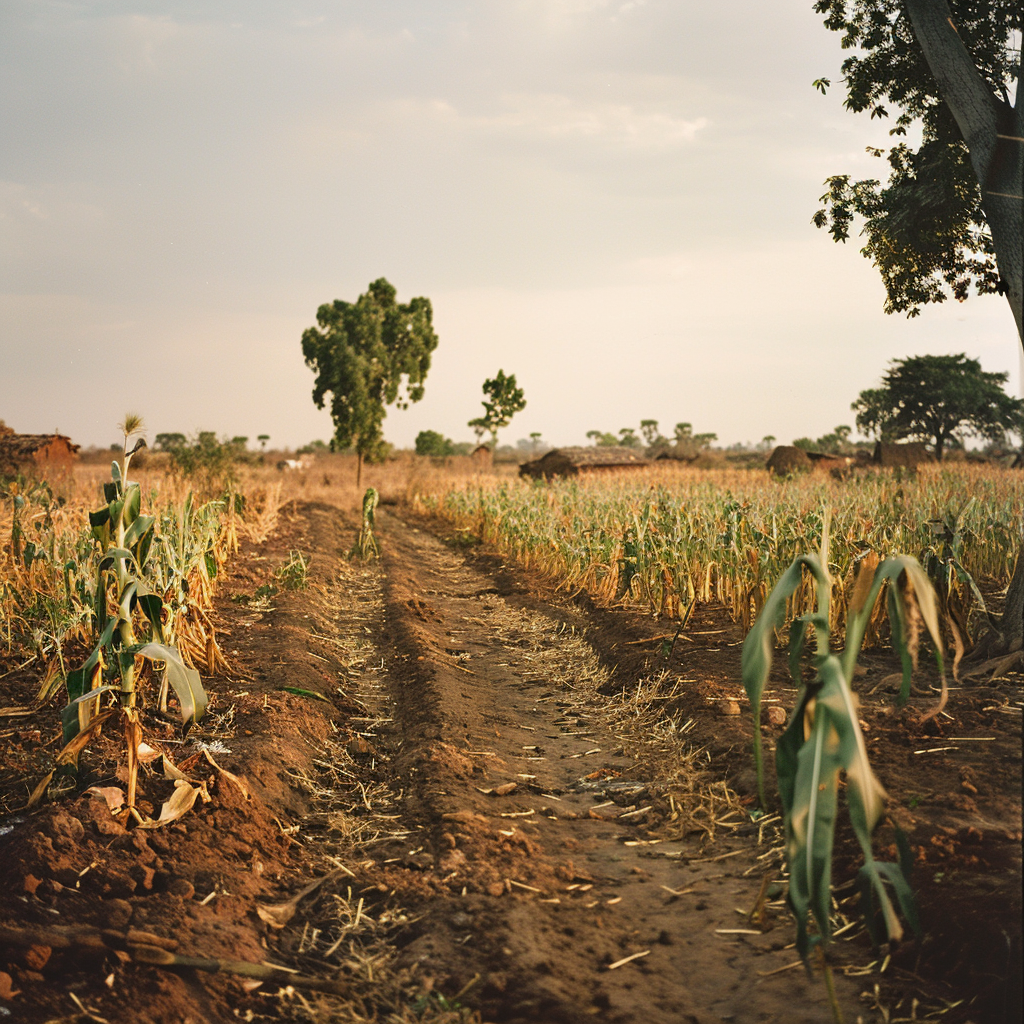Low-Tech Solutions for Soil Enhancement
2024 is going to be a difficult year for farmers in Zambia. The cost of agricultural inputs, especially hybrid seed and fertilizer, was beyond a lot of small farmers. The ones who could barely get by are now faced with ruined crops because of the cessation of the rains. A lot of farmers will face ruin. Yet we cannot afford to give up. We have to retreat, regroup and fight another day. There are some factors the small farmer has no control over, and there are factors that he or she can do something about.

In recent years, the conversation around sustainable agriculture has gained significant momentum, challenging conventional farming methods that rely heavily on chemical fertilizers and advanced technologies. A growing body of research and practice is proving that it’s entirely possible—and often beneficial—to develop fertile, productive soil using methods that deliberately avoid these expensive inputs. This approach not only supports ecological balance but also offers a beacon of hope for small-scale farmers and communities seeking to cultivate crops in a more affordable and environmentally friendly manner.
The Essence of Soil Development
Soil is not merely a medium in which plants grow; it is a living, breathing ecosystem teeming with microorganisms, organic matter, and minerals that together foster a cycle of life and growth. Developing soil without relying on chemical fertilizers involves enhancing its natural fertility and structure through biological and physical means. This process encourages biodiversity, improves water retention, and cycles nutrients efficiently, leading to healthier plants and more resilient ecosystems.
Organic Matter: The Heart of Fertile Soil
One of the cornerstone practices in natural soil development is the incorporation of organic matter. Compost, green manures, and mulches play a pivotal role in this regard. Compost, made from decomposed plant and animal materials, enriches the soil with essential nutrients. Green manures—crops grown specifically to be plowed back into the soil—add organic matter and fix nitrogen, a crucial nutrient for plant growth. Mulching, the practice of covering the soil with organic materials such as straw or leaves, suppresses weeds, retains moisture, and adds organic matter as it decomposes.
Crop Rotation and Polycultures: Diversifying for Health
Diversifying what’s grown in the soil is another critical aspect of its development without artificial inputs. Crop rotation—the practice of growing a series of different types of crops in the same area across a sequence of growing seasons—reduces pest and disease pressure, improves soil structure, and enhances nutrient cycling. Polycultures, or the cultivation of multiple crop species in the same space, mimic natural ecosystems, leading to fewer pest outbreaks and a more balanced nutrient uptake.
No-Till Farming: Protecting Soil Structure
No-till farming, a method that avoids disturbing the soil through tillage, preserves soil structure, conserves moisture, and maintains organic matter levels. By not turning the soil, carbon is sequestered, erosion is minimized, and the habitat for soil organisms is preserved. This method demonstrates that soil development and crop production can be achieved without disrupting the very foundation of soil health.
Biological Pest Control: Working with Nature
Without the use of synthetic pesticides, natural soil development strategies often incorporate biological pest control. This involves promoting beneficial insects and microorganisms that prey on pest species, thus maintaining a natural balance within the ecosystem. Companion planting, for example, can attract these beneficial species while deterring pests, reducing the need for external pest control measures.
The Role of Livestock: Integrated Farm Ecosystems
Integrating livestock into crop production systems can significantly enhance soil fertility. Animals such as chickens, goats, and cattle can contribute to soil health through their manure, which is rich in nitrogen, phosphorus, and potassium. Moreover, their movement across the land can help break up hardpan, aerate the soil, and incorporate organic matter into the soil profile, all of which contribute to improved soil structure and fertility.
Water Management: Maximizing Efficiency
Efficient water management is crucial in any farming system, more so in ones that aim to develop soil without synthetic inputs. Techniques such as rainwater harvesting, drip irrigation, and the use of swales and contour planting can significantly reduce water usage, prevent erosion, and ensure that water reaches the roots of plants more effectively. These methods exemplify how working with the natural landscape and climate can lead to more sustainable and productive agricultural practices.
Community and Knowledge Sharing
The movement towards soil development without fertilizers and high-tech inputs is not just about the methods and techniques; it’s also about the community and knowledge sharing. Farmers, gardeners, and researchers worldwide are coming together—both in person and online—to share successes, challenges, and innovations. This collective wisdom and the shared commitment to sustainable practices are invaluable resources for anyone looking to nurture the soil and the environment.
A Path Forward
The journey towards developing fertile soil without relying on chemical fertilizers or expensive technologies is both a return to traditional agricultural wisdom and a step into innovative, sustainable practices. It represents a confluence of respect for nature, scientific understanding, and community effort. For small-scale farmers and large agricultural operations alike, these methods offer a path towards a more sustainable, resilient, and healthy food system.

In essence, developing soil through natural means is not just about growing crops; it’s about cultivating an ecosystem. It’s a process that requires patience, observation, and a deep understanding of the intricate web of life beneath our feet. As we learn to work more closely with nature, we unlock the true potential of the soil.


